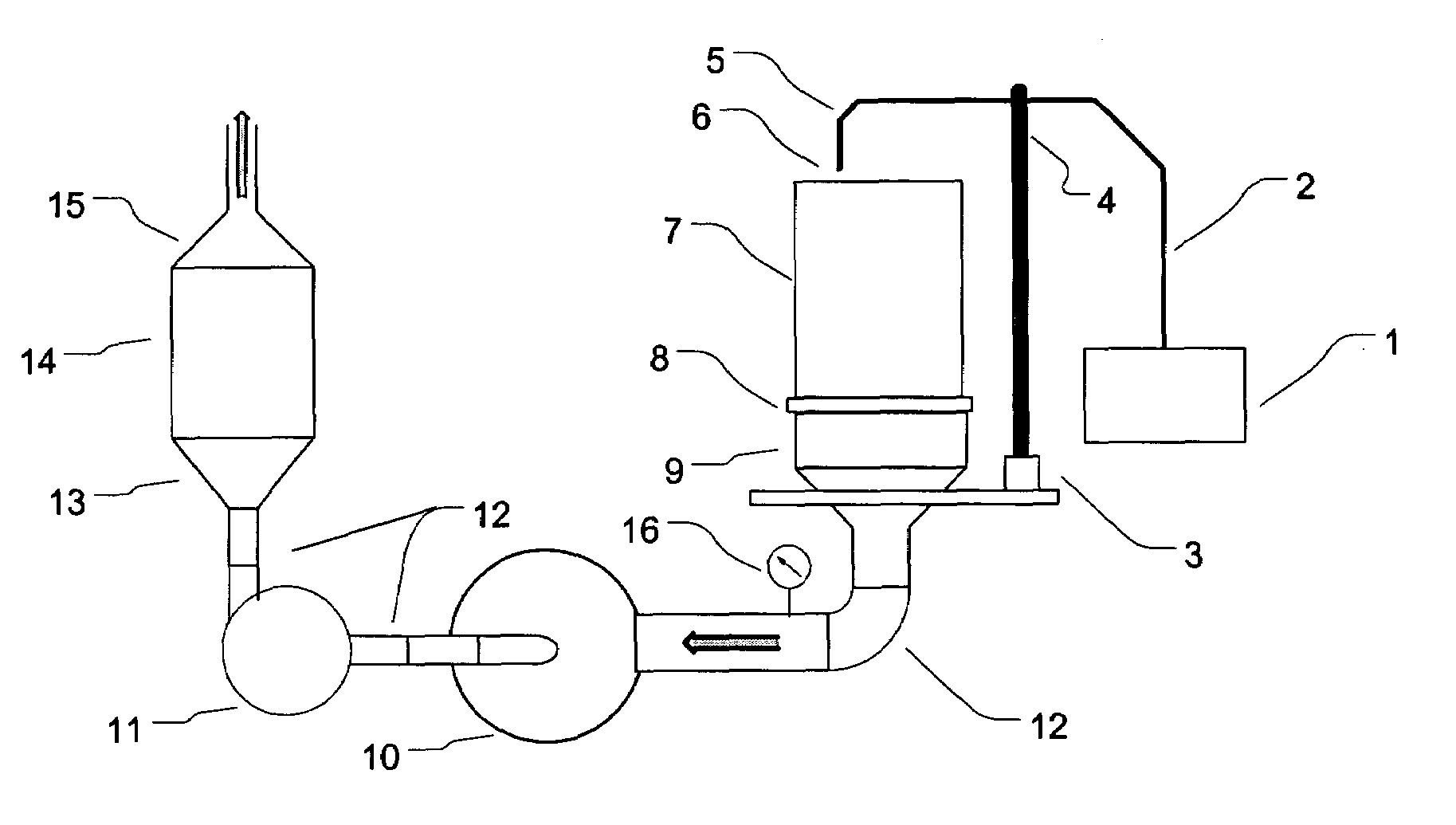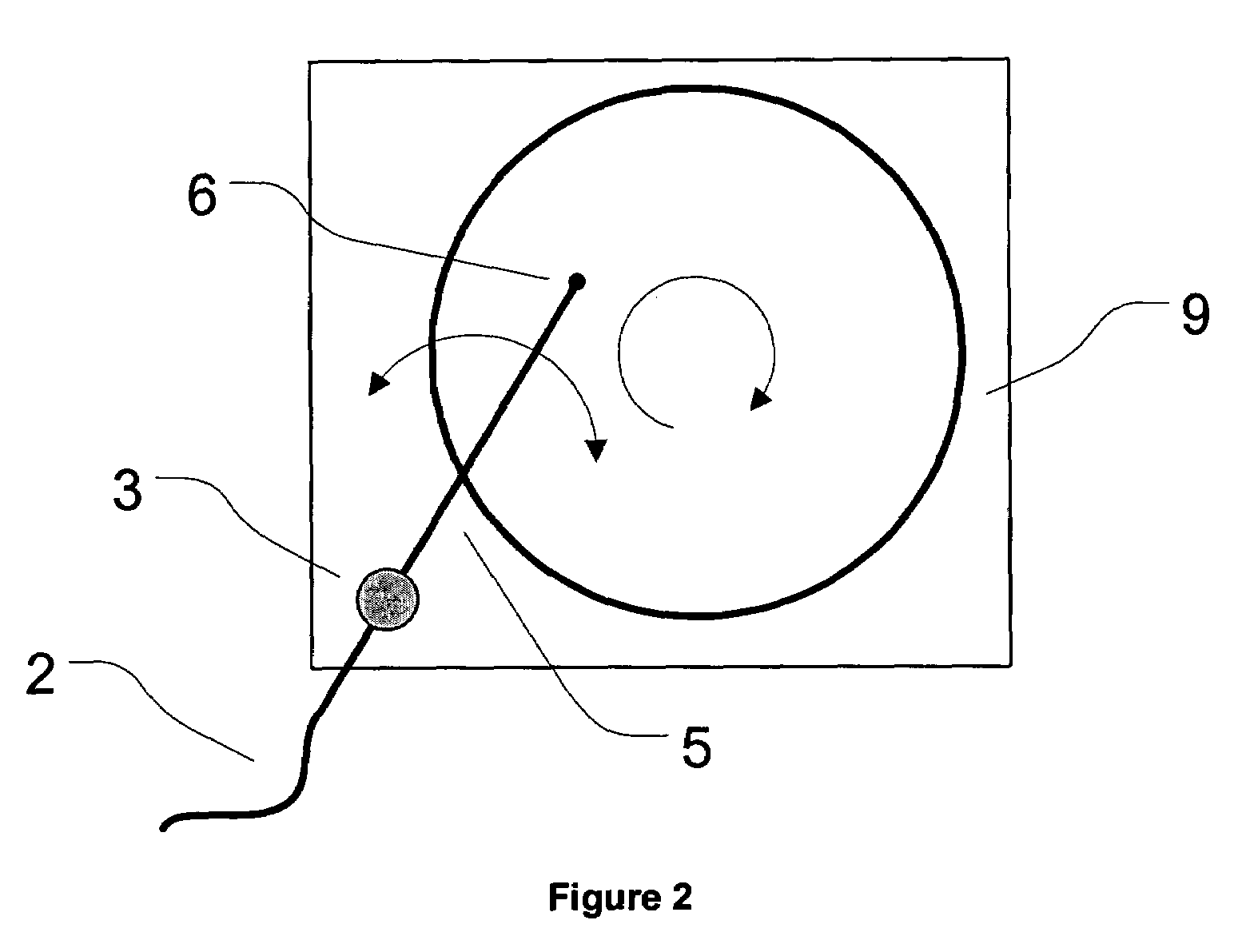Apparatus for cleaning a diesel particulate filter with multiple filtration stages
- Summary
- Abstract
- Description
- Claims
- Application Information
AI Technical Summary
Benefits of technology
Problems solved by technology
Method used
Image
Examples
first embodiment
[0059]the invention is directed to the feature of filter rotation and arc-like jet motion. High pressure cleaning fluid is obtained from a source 1 and transferred through ducting 2. The filter cleaner uses a turntable 9 and swing arm 5 with an air nozzle 6 to direct high pressure cleaning fluid to the filter face. A schematic of the overall system is shown in FIG. 1, and the nozzle translation device is detailed in FIG. 2. In FIG. 2, the filter cleaner may optionally have one or two motors. A one motor system will have a single motor 3 which can be used in combination with reduction gears (not shown) to control both the arm 5 and turntable 9 movement. A two motor system will have independent motors for the nozzle arm 5 and the filter turntable 9. In a typical cleaning procedure, the filter 7 is attached to the rotation table with an adapter ring 8 and is locked in the starting position. When the start button is depressed, the main power relay activates, and in turn activates the fl...
third embodiment
[0062]the invention is directed to a rotating arm. This embodiment is illustrated in FIG. 7 and FIG. 8. The nozzle 728 and delivery tube 729 are attached to the cleaning fluid source 2 with a standard commercial rotating coupling 726 (available from most industrial suppliers). A suitable bearing 727 attaches the delivery tube 729 to the frame 723. The frame is attached to the flanged-connection 8, which then attaches to the DPF 7. During a cleaning cycle, the nozzle 728 rotates about the central axis of the filter, thus periodically exposing a narrow strip of the filter to cleaning fluid.
[0063]Another embodiment of the system comprises additional items for automating the process, for improving the cleaning efficiency, and for determining when the cleaning process is complete (FIG. 9). The cleaning fluid is be heated through in-line electrical or combustion means 22. Heating may aid particulate removal by volatilizing part of the particulate, and decreasing the viscosity of any liqui...
PUM
| Property | Measurement | Unit |
|---|---|---|
| Force | aaaaa | aaaaa |
| Pressure | aaaaa | aaaaa |
| Flow rate | aaaaa | aaaaa |
Abstract
Description
Claims
Application Information
 Login to View More
Login to View More - R&D
- Intellectual Property
- Life Sciences
- Materials
- Tech Scout
- Unparalleled Data Quality
- Higher Quality Content
- 60% Fewer Hallucinations
Browse by: Latest US Patents, China's latest patents, Technical Efficacy Thesaurus, Application Domain, Technology Topic, Popular Technical Reports.
© 2025 PatSnap. All rights reserved.Legal|Privacy policy|Modern Slavery Act Transparency Statement|Sitemap|About US| Contact US: help@patsnap.com



